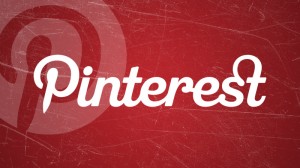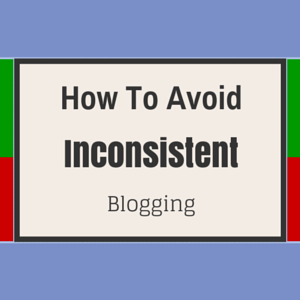September 25, 2016

The numbers are staggering.
According to The CMO Survey, since 2009, social media spending by businesses has increased 234%. Currently, at just over 10% of marketing budgets, it’s projected to double in the next 5 years.
Hands down, social media is the area of digital marketing where our agency receives the most questions. Clients ask about changing algorithms, the ad creation process, and audience targeting. In a recent conversation with one of our clients about our social media management process, she expressed her amazement at the many layers to our approach, and it made me think that perhaps our process would be useful to others.
At Resourceful Business (RB), we have found that simply put – social media management takes a village. The process is fluid and complex, and to execute it well, we must PLAN, THINK, COLLABORATE, and MEASURE with rigor and consistency.
Here’s what we do:
PLAN the content that drives social media
Step 1: Rotate the focus and types of social media posts
Every business has different facets to their brand, and marketing should use these defining aspects to reach different audiences. Our social media team will develop a content calendar that looks at what types of social media posts might optimally represent the brand and put these different categories into a rotation. For example, each week we may create one inspirational quote, link to a past blog, curate one article we like, create a new visual for some aspect of a blog or even build a quiz. On our internal content calendar, we will plan these posts out several weeks in advance for each client, so they can be put into rotation with consistency.

Step 2: Use the content continuum
Digital marketing content is on a continuum. At RB, we are in the camp that believes there are three categories: lightweight, middleweight, and heavyweight. Social media is lightweight content, but it is intricately linked to both middleweight and heavyweight content. In fact, social media is often used to leverage middleweight and heavyweight content and push it out to new audiences in novel ways. When we create social media content, our team is always thinking about how it relates to other content on the continuum. For example, if we have a great blog, we might take the key points and create a visual infographic from them. That visually enticing infographic might take off on Pinterest or LinkedIn SlideShare. The point is that content, including social media posts, is not created in a vacuum but rather as one piece of the content continuum.
THINK about the target audience
Step 3: Identify the social media platforms used by the target demographic
Social media marketing is an incredibly powerful tool, and what differentiates it from mass market tactics is the ability for customers and marketing practitioners alike to define and target a specific audience. Social platforms give many audience targeting choices from geographic location to interests, job titles and even type of mobile device.
Sprout Social has an excellent blog outlining audience segments and which social media platforms they use. Depending upon the platform, there are distinct variations in user age, income, location, and education. One interesting contrast, for example, is that Snapchat attracts a young crowd with 71% of users under the age of 25. On LinkedIn, only 23% of users are between 18 and 29. Not surprisingly, if we have a client that is targeting a young audience, a LinkedIn company page may not be a marketing priority.

Step 4: Establish the role of paid social
The organic reach, audience reach not related to a paid ad, of different social media platforms varies considerably, but certainly, strategic boosts, ads or promotions are an essential part of any successful social media strategy. A case in point is that by some estimates, only 2 to 7 percent of organic Facebook posts reach followers. The decline in organic reach on Facebook has been trending since 2012 when Facebook changed its algorithm to reduce the number of organic views. In fact, one of the real challenges of social media management is algorithms can change at any time.
Therefore, any social media strategy must include a component of paid social to widen its audience reach beyond what can be attained organically. In addition to selecting which posts will be boosted or promoted each week, a member of the RB team must create the ads in the social media portal. This process includes budgeting, audience targeting and tracking metrics after the fact.
COLLABORATE to ensure social media excellence
Step 5: Use social media management tools
One of our essential social media management tenets is that the more team views and eyeballs we get on our client content before it goes out, the better it will be. That philosophy drives RB’s use of a number of collaborative social media management platforms. Some examples include Schedugram for Instagram posts, Canva for visual creation and post edits, Hootsuite for scheduling posts and Google Docs for collaborative social media documents such as a list of relevant hashtags.
One of our essential social media management tenets is that the more team views and eyeballs we get on our client content before it goes out, the better it will be.
Step 6: Gather multiple team inputs for “agency quality” social media posts
A social media post that appeals to one person may not appeal to another, so an engaging post or image is an art and by no means a science. However, some aspects of a social media post which contribute to its strength include relevant hashtags, well-written copy, an absence of typos and crisp imagery. These factors can be controlled, and our strategy is to gather multiple inputs from our team in these areas to maintain a standard of social media excellence.
Here’s an example of our Instagram post creation process. RB team members play different roles throughout the workflow:
- In Canva, begin with the Instagram Post design type template so the image is sized correctly
- Add an image to the Canva template, typically sourced from numerous free stock photo sites
- Overlay the client’s logo as a watermark in the corner of the design
- Write the post copy and hashtags in two different Canva Team Stream comment fields
- Reference the source of the image in another Team Stream comment field (RB team use only)
- Solicit comments, edits and changes from different members of the RB team
- Once approved, add the image and copy to our social media client queue in Schedugram

MEASURE social media impacts and then refine the strategy
Step 7: Define and track social media Return on Investment (ROI)
For any marketing strategy, it’s essential to look at the Return on Investment (ROI). Social media is no exception, and broadly speaking, ROI for social media can be viewed against many different metrics – audience reach, website inbound marketing traffic, or as a viable lead acquisition source.
Each month, our clients receive a report which shows social media engagement by platform. The RB team looks at many metrics (likes, shares, comments and top performing posts) and user growth. If there is a paid social strategy in place, we will look at top performing organic posts and boosted posts. More broadly, we look at month-to-month trends per platform, across different platforms and analyze the impact of social relative to key statistics in Google Analytics. As the year progresses, RB will examine trends and patterns over a longer trajectory.
Step 8: Continuously refine the social media strategy
With consistent reporting in hand, our team will talk to clients and refine the social media strategies in place. Some recent examples include a shift of paid social dollars into more Instagram ads and away from Facebook ads. This particular business was very visual, and we saw Instagram users grow rapidly and overtake Facebook users within a few months. In addition, the type of follower we were attracting with Instagram aligned with the target audience the client desired. Another example is a doubling of Facebook ad dollars for one client as the Facebook user growth continued to climb and attract users that were converting into new clients.
“It takes a village.”
The old African proverb, “It takes a village,” alludes to the notion that the broader community is involved in the raising of a child, and today, the saying suggests collaboration is essential for a task at hand. When it comes to managing social media for clients, it’s an important maxim. Although a person can put an Instagram post up in seconds, it makes far more sense for client social media management to take a “village” approach, one that incorporates process, rigor, and accountability.
Plan, think, collaborate, measure – and throw in a great team. These are the essential elements of social media management excellence.
________________
Originally published: Resourceful Business blog.
Digital & Social Articles on Business 2 Community(25)







